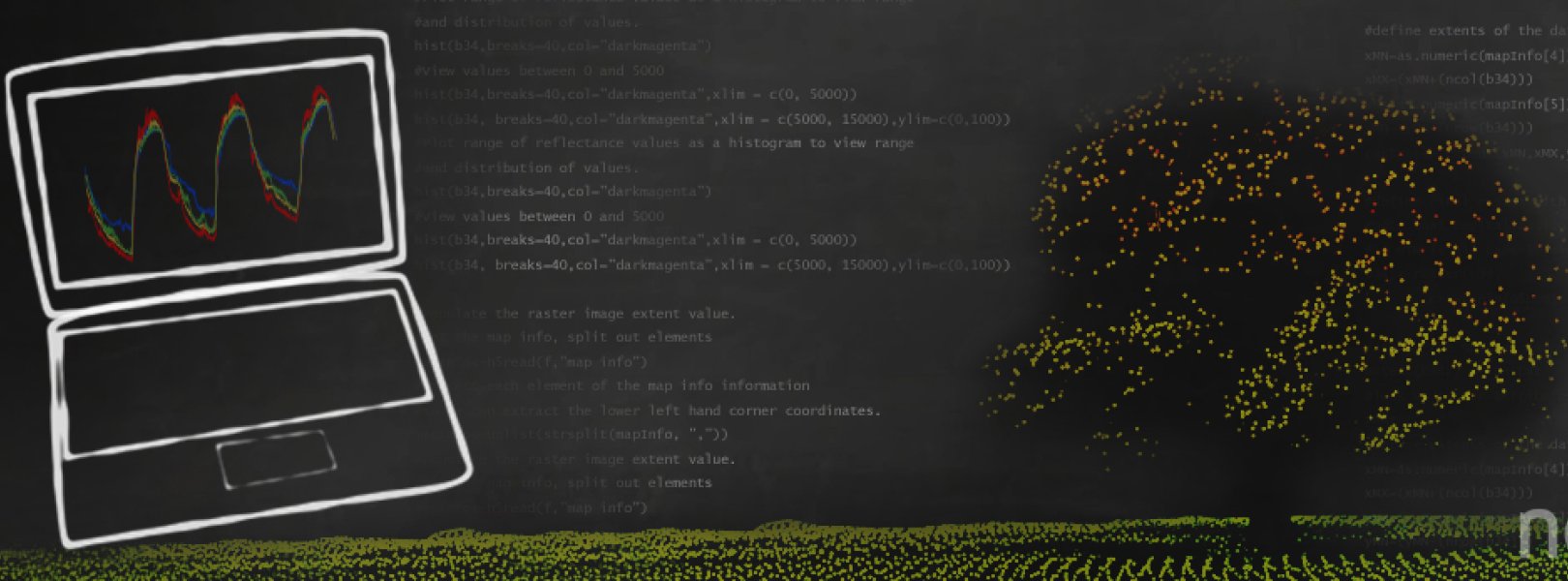Tutorials

Looking to improve your data skills using tools like R or Python? Want to learn more about working with a specific NEON data product? NEON develops online tutorials to help you improve your research. These self-paced tutorials are designed for you to used as standalone help on a single topic or as a series to learn new techniques.
Code for most script based tutorials can be downloaded at the end of the tutorial. Source files can also be found on GitHub. If you are interested in contributing a tutorial to this collection, please reach out using the Contact Us form, and we can guide you through the process of submitting resources to the GitHub repository.
All materials are freely available for you to use and reuse. We suggest the following citation for tutorials: [AUTHOR(S), NEON (National Ecological Observatory Network)]. Data Tutorial: [TUTORIAL NAME]. [URL] (accessed [DATE OF ACCESS]). See Citation Guidelines for examples, and for guidance in citing data and code.
Tutorials
About Hyperspectral Remote Sensing Data
|
Access and Work with NEON Geolocation Data
|
Access NEON Data for Metagenomics
|
Assessing Spectrometer Accuracy using Validation Tarps with Python
|
Assignment: Reproducible Workflows with Jupyter Notebooks
|
Assignment: Version Control with GitHub
|
Basic R Skills
|
Build & Work With Functions in R
|
Calculate NDVI & Extract Spectra Using Masks in Python
|
Calculate Vegetation Biomass from LiDAR Data in Python
|
Classify a Lidar Raster in Python
|
Cleaning and Gap-Filling NEON Aquatic Instrument Data
|
Compare tree height measured from the ground to a Lidar-based Canopy Height Model
|
Convert to Julian Day
|
Create a Canopy Height Model from Lidar-derived rasters in R
|
Create a Hillshade from a Terrain Raster in Python
|
Create A Square Buffer Around a Plot Centroid in R
|
Create HDF5 Files in R Using Loops
|
Creating a Raster Stack from Hyperspectral Imagery in HDF5 Format in R
|
Data Activity: Visualize Precipitation Data in R to Better Understand the 2013 Colorado Floods
|
Data Activity: Visualize Stream Discharge Data in R to Better Understand the 2013 Colorado Floods
|
Data Institute Activity: Calculate Index of Interest
|
Data Institute: Install Required R Packages
|
Data Management using National Ecological Observatory Network’s (NEON) Small Mammal Data with Accompanying Lesson on Mark Recapture Analysis |
Detecting changes in vegetation structure following fires using discrete-return LiDAR
|
Detecting Foggy Images using the hazer Package
|
Document & Publish Your Workflow: Jupyter Notebooks
|
Document & Publish Your Workflow: R Markdown & knitr
|
Document Code with R Markdown
|
Document Your Code with Jupyter Notebooks
|